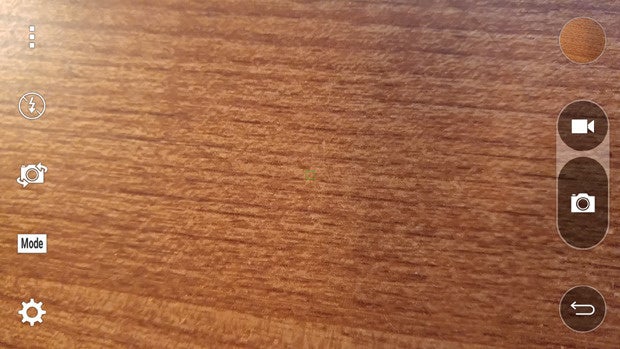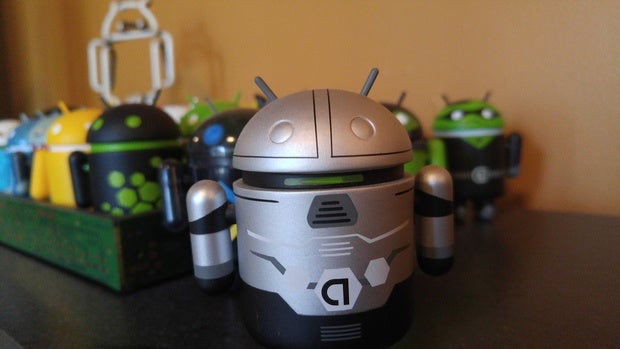How To Clear System Data On Lg G4
How good is the LG G4 camera? A real-world evaluation
LG has made big promises about the camera in its new smartphone. Does it deliver?
![]() By
By
Contributing Editor, Computerworld |

It's been a long time coming, but top-notch photography is finally making its way to Android phones.
Sure, we've had devices that are capable of taking decent photos for a while now. But recently, manufacturers have begun to make photography a primary focus of their phones -- and have actually managed to deliver consistently superb imaging experiences.
For example, Samsung raised the bar this April with its Galaxy S6. The phone's photo quality leaves previous devices in the dust, while its simple interface makes it almost impossible to get a bad-looking picture. Now LG is stepping up to the plate with its LG G4, a flagship phone about which the company has made some bold photography promises.
LG is devoting lots of marketing muscle to the G4's 16-megapixel camera and the technology that accompanies it: an F1.8 aperture lens, an enhanced level of optical image stabilization and a Color Spectrum Sensor system that's said to achieve greater color accuracy than what was previously possible.
That all sounds impressive enough, but let's be honest: When it comes to smartphone photography, most of us just want to know that we can snap a good-looking picture quickly and without much effort. So fancy technology or not, is the G4 up to the task?
I've carried an international version of the phone with me for several days to find out.
Using the G4 camera
First and foremost, the G4 definitely makes it easy to open its Camera app and capture a photo, which is often half the battle. The phone features a quick-launch shortcut in which you just double-tap the volume-down button on the back of the unit to launch the camera whenever the screen is off. It isn't the fastest quick-launch out there -- it typically takes about two seconds from the time I double-tap to the time the Camera app is open and ready to roll. However, it's certainly faster than turning on your phone's screen and fumbling around to find the right icon when you're in the midst of a photogenic moment.
There are two quirks related to the shortcut that warrant mentioning. First, by default, the phone not only opens the Camera app every time you double-tap the volume-down key but also automatically takes a photo. Trust me: You'll want to disable that right away. While it sounds nice in theory, it doesn't give you any time to look through the viewfinder and properly frame or focus your photo. I ended up with lots of lovely pics of my feet.
Second, the shortcut doesn't work while the phone's screen is on -- so if you're in the midst of using your device and want to open the camera, you're out luck. This is a contrast to the camera shortcuts on devices like the Galaxy S6 and Moto X, and it's a bummer -- because there are plenty of times when you might have your screen on and still want quick access to the camera without having to look for an icon.
Once you get into the Camera app, though, the interface is fantastic. By default, the app uses an Auto mode that gives you a shutter button on the bottom (or side, depending on how you're holding the phone) and a small handful of options at the top (or alternate side). All you do is tap anywhere on the screen to set the focus (if you want to override the system's auto-focus choices) and then press the shutter button to capture a picture. You can manually activate HDR, too, though in theory it should automatically activate on its own when appropriate.

By default, the LG G4 uses Auto mode, which lets you tap to focus.
You can also opt to use an even more pared-down Simple mode, which turns the entire screen into a giant viewfinder and lets you simply tap anywhere on the display to simultaneously focus and snap a photo. You can pinch to zoom in or out -- and that's about it. If you're like most folks and don't plan to spend much time messing with settings, this mode is probably the way to go; capturing a photo can't get much easier. (The only caveat is that the mode appears to have no way to take a video -- a strange and unfortunate omission.)

In Simple mode, the LG G4 becomes a basic point-and-shoot camera.
And last but not least, if you're feeling particularly ambitious and know your way around camera configurations, you can switch the G4 into Manual mode -- which, like the manual modes on other Android phones, gives you complete control over advanced settings like white balance, focus, shutter speed and ISO. It also allows you to save photos in the editing-friendly RAW format, if you're a photo expert and want that kind of granular processing ability.

Photographers and experts will want to try Manual mode, which gives complete control over camera settings.
Regardless of which mode I used, I found shutter speed on the G4 to be generally pretty fast, though not instantaneous. In fact, it occasionally got perplexingly poky, like when the lighting wasn't great or I manually activated HDR. In those instances, a solid few seconds sometimes passed from when I pressed the shutter button to when the photo was actually captured, which made it hard to know when it was safe to move my phone without messing up the shot. But more often than not, it wasn't an issue.
By the way, if you ever feel like playing paparazzi, the G4 has the now-standard option in which you can hold down the shutter button (in anything but Simple mode) to take a series of rapid-style photos in close succession.
So how about the actual quality of the G4's images? Let's take a look.
(Note: Unless otherwise noted, all images here were taken with the phone's default settings, in Auto mode, with no post-capture processing or editing -- aside from the photos being sized down to fit on this page. You can click on any image to view it at its full resolution.)
Straight shooting
First, a series of close-up (sometimes called macro-style) and mid-distance shots. On the whole, the LG G4 does very well in this regard.

The G4 does admirably well with close images in bright outdoor conditions. This flower shot is crisp with bold, true-to-life colors and impressive detail. Even when zooming in and studying the full-resolution image closely, the amount of quality loss is minimal.

The G4's performance is respectable, if not exemplary, with macro-style shots in naturally lit indoor environments. You'll see a fair amount of quality loss if you look closely at the full-res version of this image, but for most common uses -- online sharing, printing and the likes -- the photo is perfectly fine.

Here's one taken outside on a partly cloudy day. A very solid image, and one that compares favorably to a similar shot I took (on a different day) with the Galaxy S6.

Consistency is the key challenge with the G4's camera. This image looks a little washed out and soft in focus, though the amount of detail in the tree behind the hydrant is commendable. (You can see a similar shot taken with the S6 -- though on a sunnier day -- if you want to compare.)

The G4's color reproduction is generally commendable, as you can see in these Red Delicious apples photographed under harsh lights in a grocery.

The phone's photos aren't always as vibrant as they could be, though, as this photo -- taken in essentially the same lighting as the previous image -- demonstrates.

It's really just hit and miss. But when the camera gets a good shot -- like this one of tomatoes -- it nails it.
How To Clear System Data On Lg G4
Source: https://www.computerworld.com/article/2919036/how-good-is-the-lg-g4-camera-a-real-world-evaluation.html
Posted by: phillipsnursucher.blogspot.com

0 Response to "How To Clear System Data On Lg G4"
Post a Comment